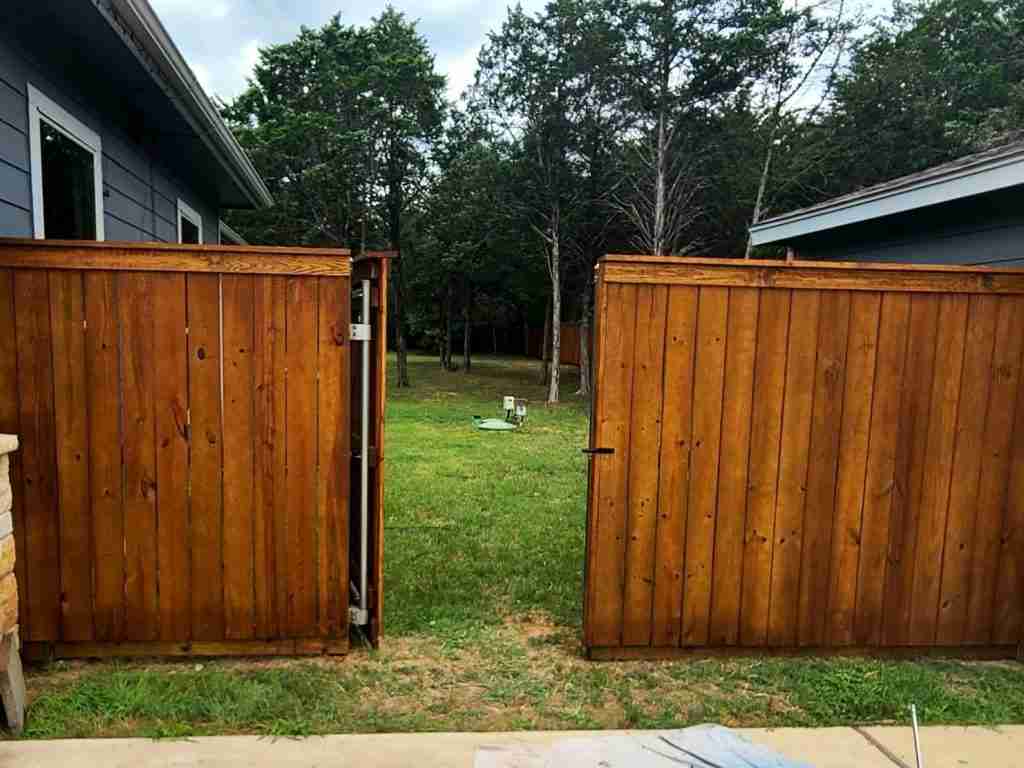A common question that is asked on the internet is, “can fence posts be 10 feet apart?”. The answer to this question could be yes or no depending on what type of fence you are installing and what exactly you’re trying to fence in.
The Importance of Correct Fence Post Spacing
In any fence, the distance of the posts matters. The closer the posts are together, the more sturdy the fence will be, however if they are too close, the fence will look strange and you’ll run up the cost of the fence overall because you’ll need to purchase more posts. If the posts are too far apart, the fence will be weaker and more prone to collapsing. The objective is always to strike the perfect balance between optimal strength of the fence with a pleasing appearance. For both structural and visual reasons, you should attempt to have the posts as evenly spaced as possible. Sometimes this isn’t possible for the entire fence depending on the shape of your property lines. The manufacturer of the fence materials will often have a recommended spacing for posts, but it can vary under certain circumstances. Let’s take a look at different types of fences and what the typical distance between posts is.
Wood Privacy Fence

The maximum post spacing for residential wood privacy fences is 8 feet. The actual spacing distance you choose will depend on the length of the runs you’re building and you should prioritize spacing consistency rather than sticking to a number regardless of the situation. For instance, if you have a run of 30 feet, it’s going to work a lot better to have posts 6 feet apart, because 30 is divisible by 6. There are also instances when you won’t stick to the spacing, such as if you are building a short panel that runs from the wall of a house to a gate. The space might need to be tight and you can space 2 posts as little as 2 feet apart in that instance. But for the majority of the fence, 6 to 8 feet is a good spacing to shoot for.
Chain Link
Chain link isn’t going to resist the wind as much as a wood picket style fence so you can space the posts out a little farther. 10 feet is the maximum recommended distance for chain link posts, but remember that the rules still apply, the farther apart the posts, the weaker the fence will be. If you have livestock such as goats that will constantly test the durability of the fence, you may consider narrowing the spacing on the posts.
Ornamental and Wrought Iron Fence
Iron fences usually come in manufactured panels that are typically 8 feet long. A post is placed at the end of each panel making the space between posts 8 feet. If the run of fence you are building isn’t divisible by 8, another panel will have to be made to accommodate the specific situation.
High Tensile Steel Fencing
High-tensile fence posts can be spaced out farther than the fence types mentioned thus far, but it also depends on the material of the post you’re using with high-tensile fencing. There are also several different styles of fence that use this material. High tensile field fences can safely have posts up to 15-20 feet apart. For smooth wire and barbed wire, post spacing can be as much as 20-30 feet apart.
Field Fence and T-Post Fence
If you’re installing a field fence with wire mesh of some type with a T-post, you’re going to want to use wood posts at the corners and gates to withstand the tension of the wire. A T-post can be placed every 8-12 feet.
Butler Contracting Builds Fences
If you don’t want to mess with the complexities of post spacing, call Butler Contractors and have some professionals install your fence for you to save you the headache. Talk to us directly by calling (844) 628-8537 or get an online virtual quote by using our Fence Estimator Tool.



